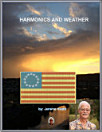Controlling Probability Distributions
Despre această carte electronică
Newtonian events are singular by definition (an action produces an equal but opposite reaction). Science that is defined this way is special; in that, we can know exactly [almost] what happened, we can exactly [almost] duplicate it, and the process is reversible. So we ultimately do the engineering and take control [almost complete] of the process. Singular problems, singular solutions.
Probability Distributions
I believe it was Jaynes that said, in one of his articles, that there was a degrees of freedom uncertainty that went up with increasing degrees of freedom; and he would prove that later. He said that about a lot of things but often forget to do those proofs.
The issue is that as uncertainty goes up we lose the possibility of following the process with Newtonian equations (we lose reversibility). In my view we then trade reversibility for a wave equation. If there are no particularly interesting constraints the “wave” equation is a boring distribution. But with interesting constraints like eagles wings, we have interesting things happen to the wave equation. The wings, or tall buildings, or tall canyon walls becomes nodes in the system. Then the wave equation becomes a distribution of molecules that “fit” well into the combination of constraints including our nodes. Fitting well, here, makes it look a lot like the nodes are attractors.
Probability distribution problems are not singular. Multiple things are going on all at once, and they all tend to inter-react with each other.
To solve problems with probability distributions you don’t just turn a switch.
Despre autor
Dr. Jerome Heath,
Professor of Computer Science at Hawaii Pacific University. Holds the Ph. D. from the University of Hawaii in ‘Communication and Information Science’.
Dr. Heath taught both Management Information Systems and Computer Science at the university level. Presently Dr. Heath is retired from teaching and is writing textbooks. The textbooks include ‘Context Based Philosophy’, ‘The Animated Computer’, and ‘Hermeneutics in Agile Software Development’. These books are available from Google
Try: Books under Dr. Jerome Heath.











